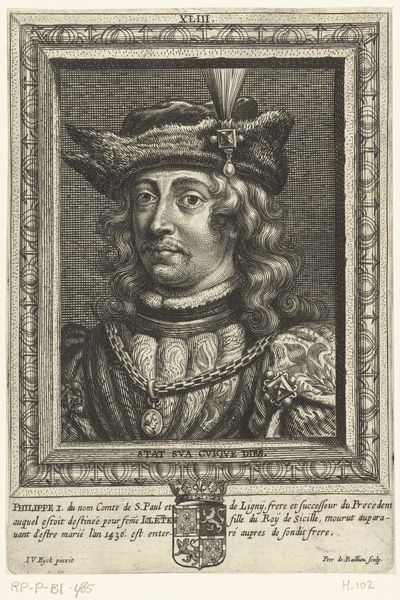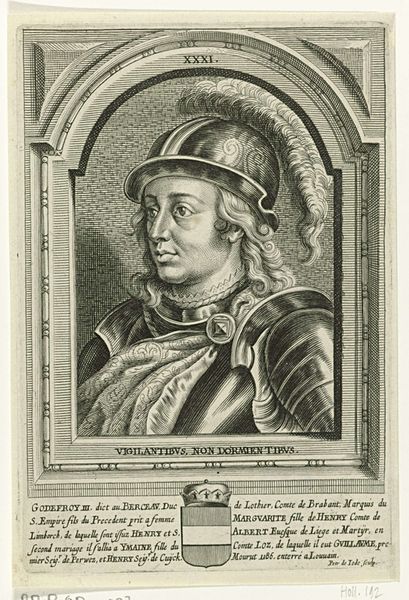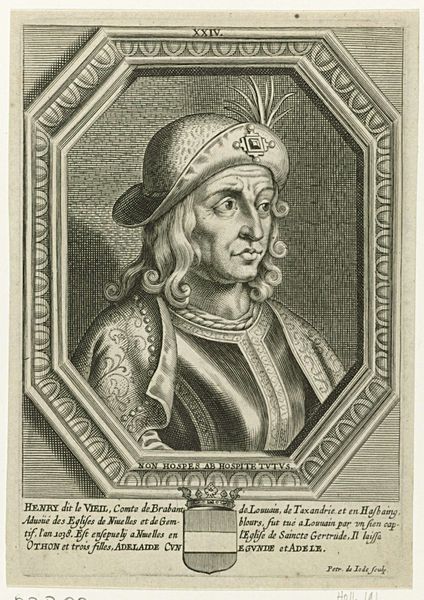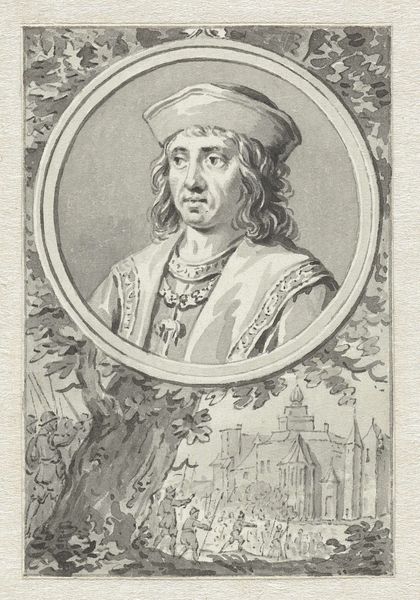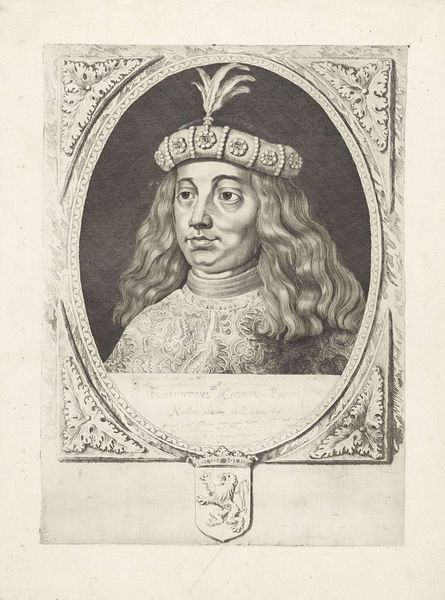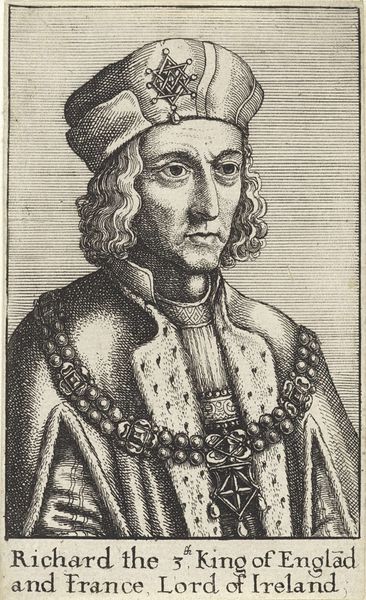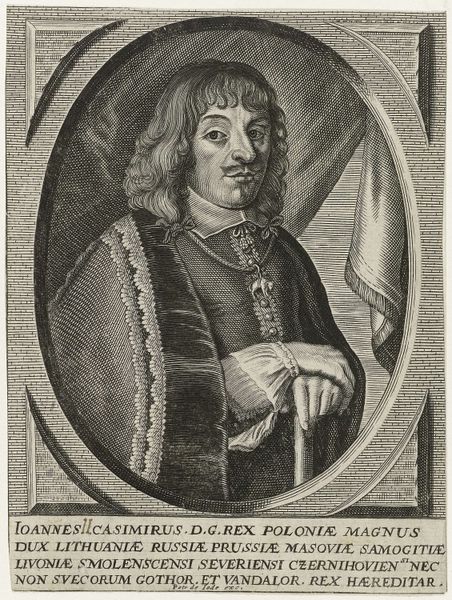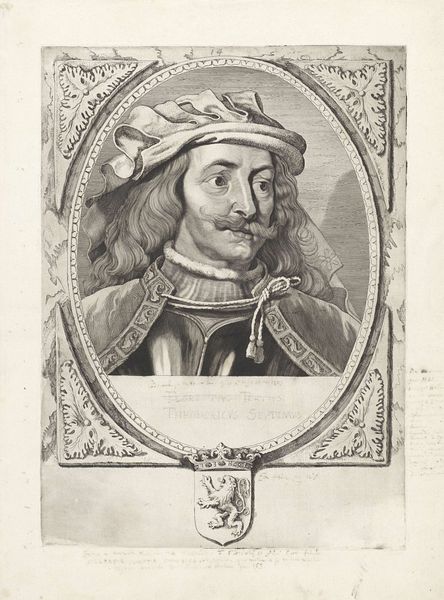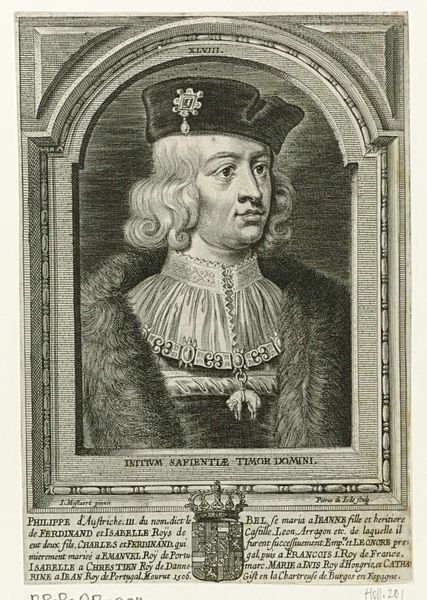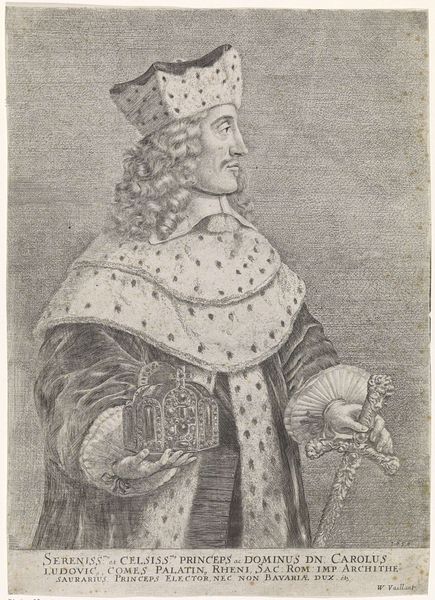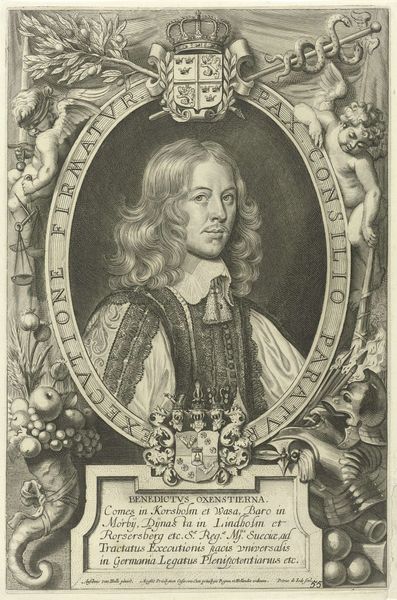
print, engraving
#
portrait
#
baroque
# print
#
old engraving style
#
history-painting
#
engraving
Dimensions: height 176 mm, width 120 mm
Copyright: Rijks Museum: Open Domain
Curator: Here we have Coenraet Waumans' "Portret van Otto, graaf van Brabant en Leuven," an engraving from 1662. It resides here at the Rijksmuseum. Editor: My first impression is how the tightly controlled lines evoke such a solemn and poised presence. The meticulous detail almost traps Otto within its formality. Curator: Indeed. Waumans executed this engraving during a period of intense political and religious upheaval in the region. The portrait underscores Otto’s lineage and claims to power amidst the complexities of the time. The Baroque style, with its intricate ornamentation, emphasizes the social hierarchy and power structures that defined 17th-century Europe. Editor: Look closely, and one notes the ornate detailing on his hat and fur-trimmed collar. Each tiny mark seems placed to emphasize the subject's nobility through composition, the very architecture of his status, rather than narrative alone. It's pure, symbolic display. Curator: Yet, the symbolism extends beyond the ornamentation. Otto's very identity is steeped in history and politics. By connecting him visually to his titles and heritage, Waumans emphasizes Otto's social role and reinforces ideas about legacy and the weight of familial expectation during times of war and changing religious tolerance. It speaks to contemporary intersectional narratives about identity. Editor: The way the artist frames him—an oval, bounded by those radiating lines—it feels both decorative and subtly constricting. Like a study, it highlights a surface realism where textures denote meaning. Note too how those textures add to a somber mood that defines the print. Curator: What do you make of the inscription? "A MANE NOSCITVA SERENVM". Waumans seeks to connect this historical figure not only to a specific political moment but to broader considerations about leadership and nobility within changing societal contexts. Editor: An observation regarding how art manipulates presence. He's presented as timeless. It’s like light and shadow are conspiring to form the illusion of depth. And, ultimately, presence. Curator: Agreed, thinking about power, legacy, and identity in the Baroque era adds many complex dimensions. Editor: Yes. The structure within allows for an appreciation of these enduring concepts, brought forth in an entirely new way.
Comments
No comments
Be the first to comment and join the conversation on the ultimate creative platform.
